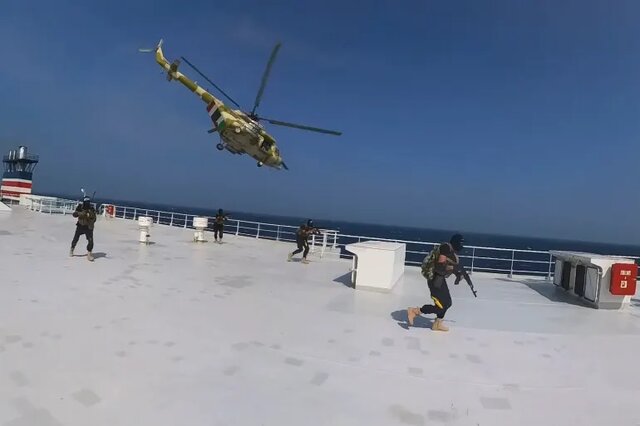US media acknowledging the intelligence of Yemenis
The continuation of Yemeni army operations in the Red Sea and Washington’s inability to effectively confront it reflects the gradual decline of the US global role as a maritime power and a failure to protect its interests.
According to RCO News Agency, US media reported that Ansarullah has used US capabilities and restrictions to advance its interests, referring to the US inability to confront the Yemeni army in the Red Sea.
Yemen’s Ansarullah has been able to control one of the most vital waterways in the world, with the intelligent use of weakness and over pressure on the US Navy, according to National Internet.
The Yemeni army continues its threats to the Red Sea despite the US Navy attacks and its allies, and has been blocking the strategic waterway for almost five years. As a result, most ships have been forced to travel the long and costly path of Nick in South Africa, and the United States has failed to protect its interests and its allies in one of the world’s key bottlenecks.
In the new era of the Naval War, anti -coil missile systems and drones have allowed the Yemeni army to close the Strategic Strait of Bab al -Mandeb. This stalemate has dangerous consequences for the United States, as a major global maritime power.
The first lesson of these developments is technological progress: UAVs and ground missile systems can now target surface ships than hundreds or even thousands of kilometers. Ansarullah’s attacks in the Red Sea show the difficulties that the US Navy has faced. This force, which is no longer the world’s largest naval and replaced China, has not yet found a suitable solution to counter new threats.
The US Navy’s advanced and expensive aircraft carriers and carriers are not very suitable for this type of war, and their adaptation to new conditions may take years.
American ship in the Red Sea
The second important point is the excessive expansion of the US Navy’s commitments. The US fleet has been forced to send four aircraft carrier to the Red Sea region to protect warships and trade against Houthi attacks. But despite this powerful presence, the sea route remains blocked. At the same time, other challenges, including China’s threats, continue. While China has more than 5 warships, the US Pacific Fleet has only about 5 ships.
The worn -out industrial and shipbuilding infrastructure prevents the navy from reaching China numerically. However, the United States is committed to defending its allies such as the Philippines, Japan and South Korea and must be ready to defend Taiwan.
In addition, the US Navy must be ready to confront Iran. Earlier this year, the force played a role in defending the Zionist regime against Iranian missile and drone attacks, while also involved with the Yemeni army in the Red Sea.
In such circumstances, the permanent and costly presence of US forces in the Red Sea will be an uneven strategy to deal with the scattered and repeated threats of Ansarullah.
Understanding this fact, the Trump administration has recently decided to exacerbate operations and has brought more aerial resources, including B2 bombers, for offensive attacks against Yemen. But it is still unclear that merely aerial power can have a definite result. Although more than a billion dollars of air ammunition have been consumed in the past three weeks, Yemeni army attacks in the Red Sea continue.
If the air power fails to stop Ansarullah, Washington will have to face a difficult and decisive decision.
One option is to easily withdraw from the Red Sea and allow European allies to continue military confrontation with Ansarullah. However, Europe is more affiliated with the Red Sea transit route more than the United States, and Washington’s European allies have more than a thousand war vessels. Unlike the military situation in the land of Europe, where NATO is facilitated to confront Russia and the Ukrainian crisis, the European Navy must have enough ability to manage the Red Sea crisis; Even in the event of a US Navy.

Yemeni army
It was probably this view that led US Vice President JD Venus recently criticized Europeans for their performance in the Red Sea campaign and demanded more participation.
However, the US media warned that the withdrawal from the Red Sea would send Iran a misconception. Such a move will be interpreted as another sign of American strategic decline.
On the other hand, the US inability to stop the Yemeni army operations in the Red Sea has diminished its credibility with its offenders, and Washington has to make up for it to some extent.
According to the US media, the Yemeni army has been able to put the United States in a strategic bottleneck, and Washington can no longer continue a deadlock. This is a crisis that either needs to be resolved definitively, or the United States has to pay heavy strategic costs.
There may be time when there is no choice but to exacerbate the conflict; Otherwise, the US must be ready to repeat a retreat similar to Afghanistan; This time in the Red Sea.
The end of the message
(tagstotranslate) America (T) Red Sea (T) Zionist regime (T) Ansarullah Yemen (T) Yemen
News>RCO NEWS
RCO

















